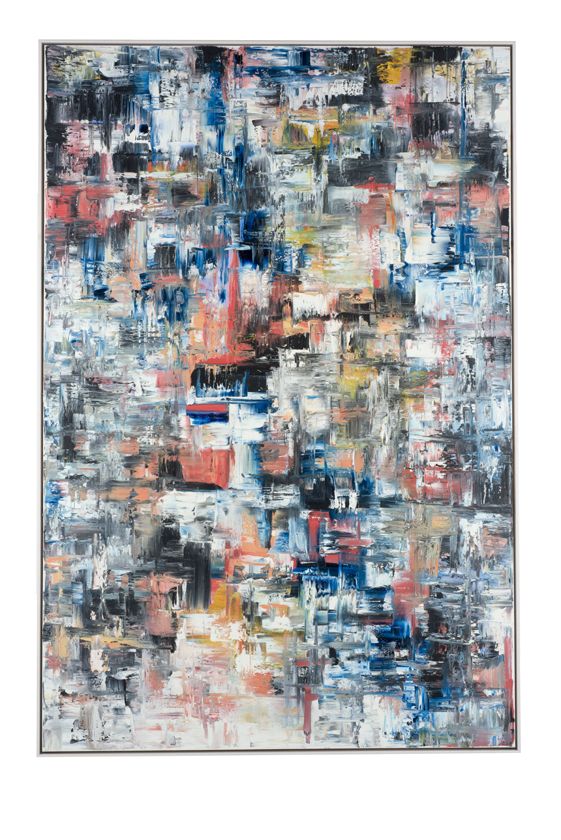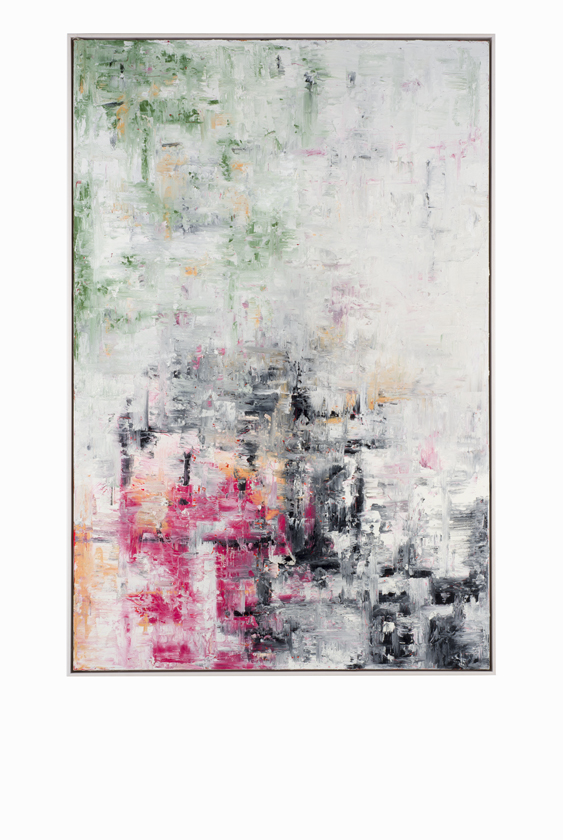Series 1
[2014]
Series 1 [2014] World Trage Gallery , New York
Exhibition Content
[2014]
Opening reception: November 20th 2014
World Trade Gallery is pleased to present a series of new works by New York- based artist Michael Angel, which, following a noted and innovative practice in digital print design, marks a return to painting, and his first solo exhibition in the city.
Colorful, but with a palette that is offset by a persistent use of blacks, navies and whites, highly textured, but with a dimensionality that is brought into relief by deliberate patches of smooth and flat, the 15 oils on show all exhibit Angel’s earnest and expressive knife-work. Here, the manual painterly gesture is on full display, peppered throughout with moments of seeming pixilation, perhaps an artifact of, or homage to, the artist’s years of working with digital techniques. The series as a whole, of course, recalls the tradition of post-war abstract painting, though absent is any of the contemporary anxiety about the condition of the medium in an art world now happy to dub a print or a cast a “painting.” This is not to suggest that Angel’s work is nostalgic or even retrospective, but only that Angel himself is primarily concerned with the business of putting paint to canvas and saves talking about it for later.
Of his abstractions, Angel is refreshingly guileless: once a painting is completed he has no unease at identifying a figure here, a memory there.
In Untitled 8, for instance, he remarks that he often sees “a girl in a chair,” and that this sometimes serves as his own private title for the work. Elsewhere in Untitled 10, “looking up at you” comes to mind. As for their public presentation, the works remain untitled, and Angel keeps at
an inquisitive remove from the viewer’s choice to see, or not see, whatever he will.
Exhibition Content
[2014]
Opening reception: November 20th 2014
World Trade Gallery is pleased to present a series of new works by New York- based artist Michael Angel, which, following a noted and innovative practice in digital print design, marks a return to painting, and his first solo exhibition in the city.
Colorful, but with a palette that is offset by a persistent use of blacks, navies and whites, highly textured, but with a dimensionality that is brought into relief by deliberate patches of smooth and flat, the 15 oils on show all exhibit Angel’s earnest and expressive knife-work. Here, the manual painterly gesture is on full display, peppered throughout with moments of seeming pixilation, perhaps an artifact of, or homage to, the artist’s years of working with digital techniques. The series as a whole, of course, recalls the tradition of post-war abstract painting, though absent is any of the contemporary anxiety about the condition of the medium in an art world now happy to dub a print or a cast a “painting.” This is not to suggest that Angel’s work is nostalgic or even retrospective, but only that Angel himself is primarily concerned with the business of putting paint to canvas and saves talking about it for later.
Of his abstractions, Angel is refreshingly guileless: once a painting is completed he has no unease at identifying a figure here, a memory there.
In Untitled 8, for instance, he remarks that he often sees “a girl in a chair,” and that this sometimes serves as his own private title for the work. Elsewhere in Untitled 10, “looking up at you” comes to mind. As for their public presentation, the works remain untitled, and Angel keeps at
an inquisitive remove from the viewer’s choice to see, or not see, whatever he will.


















